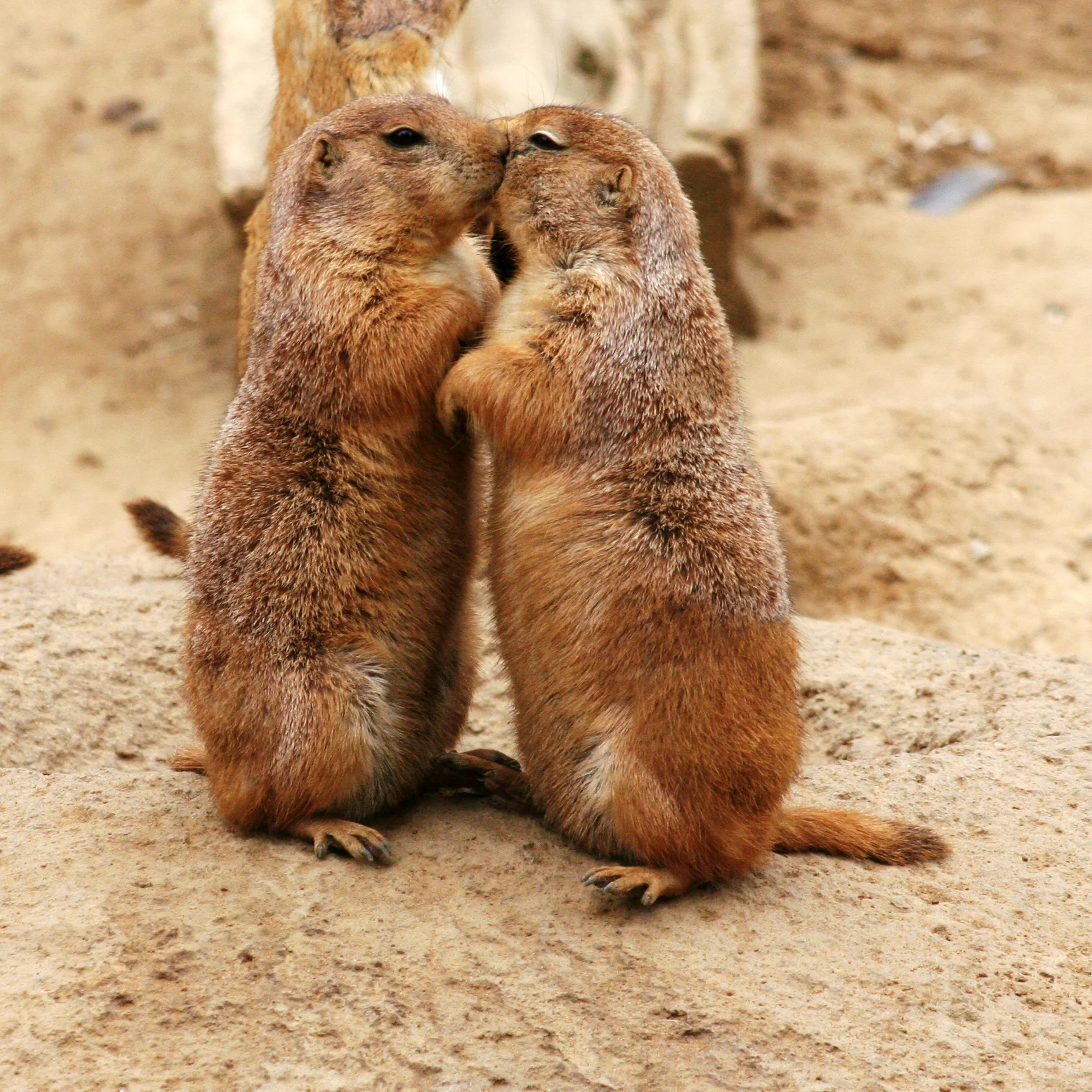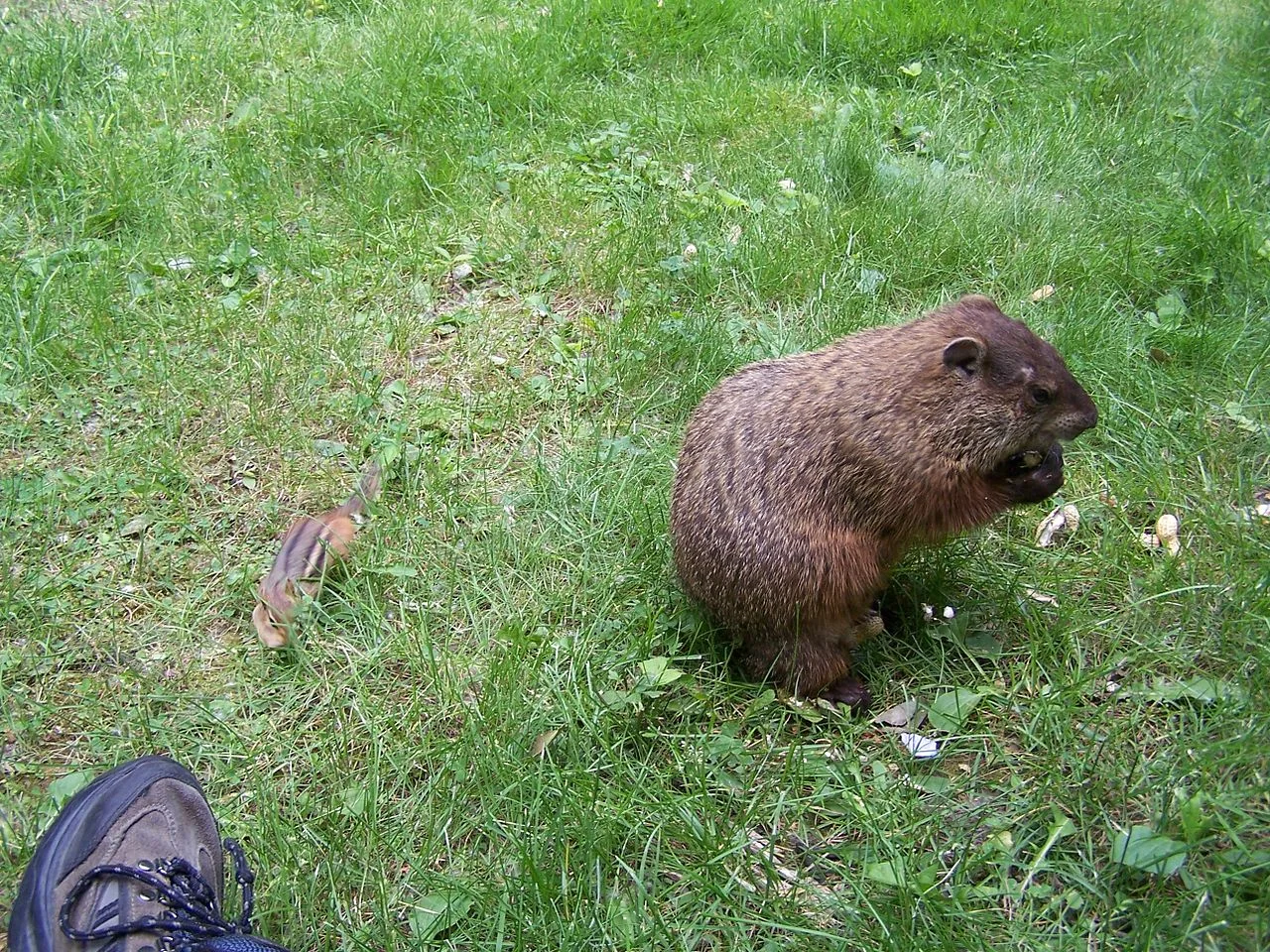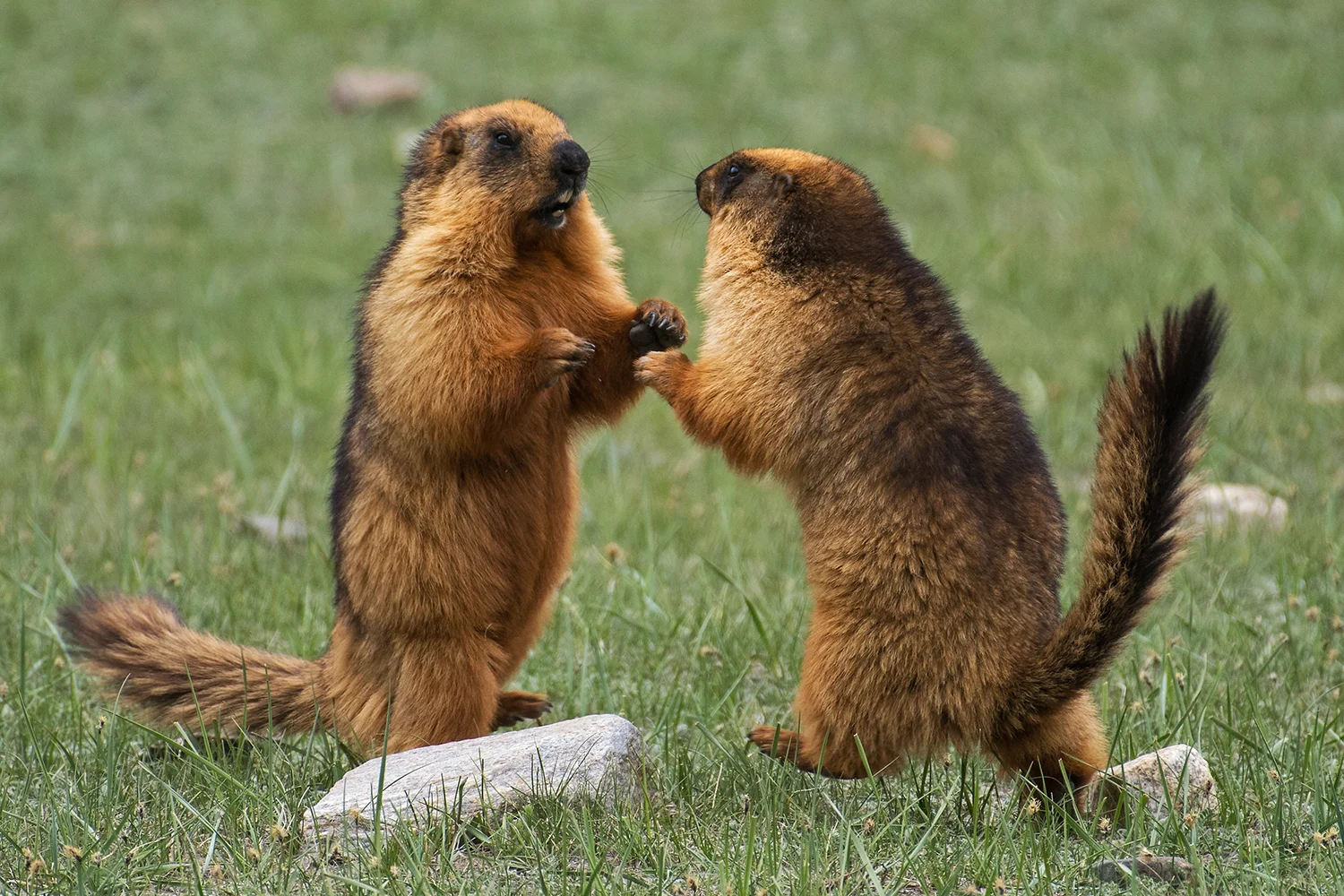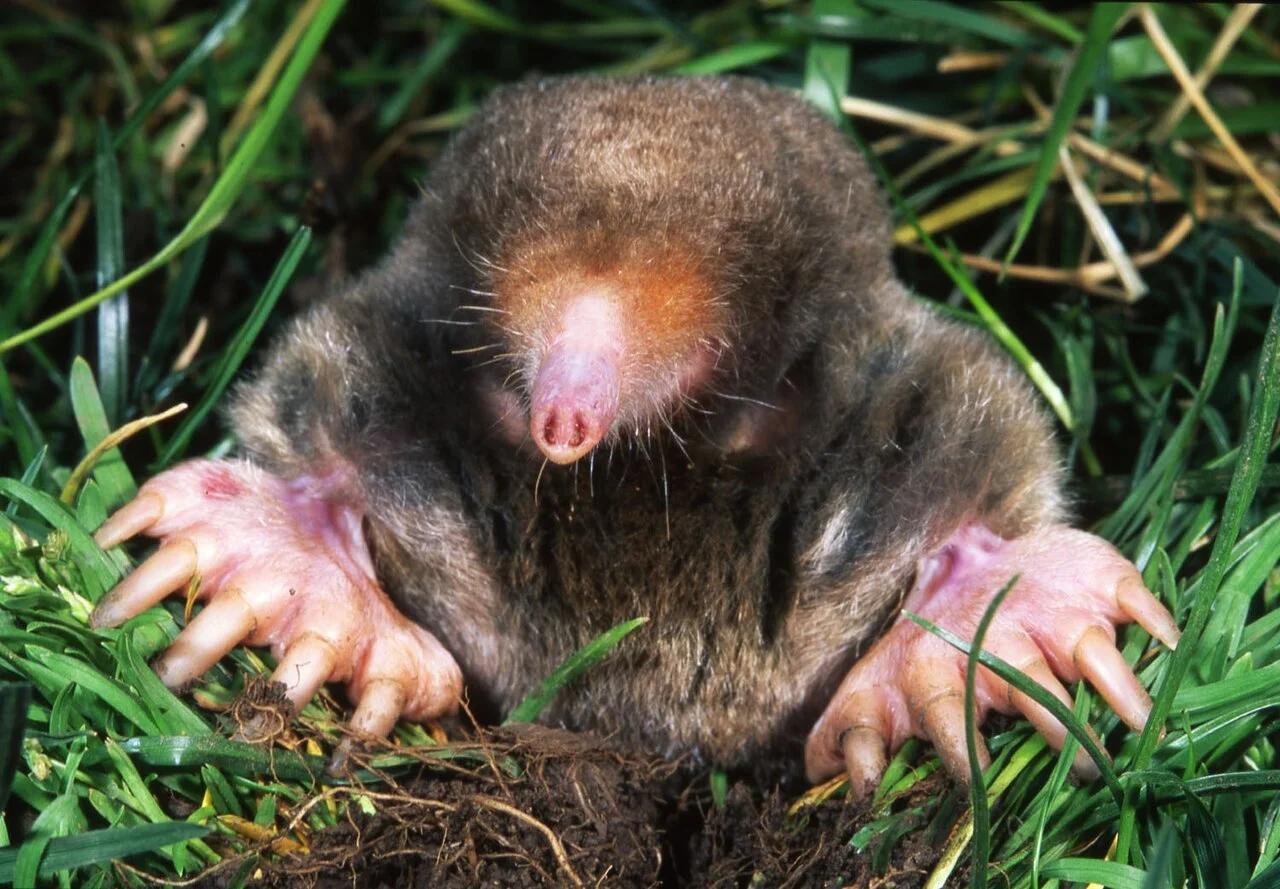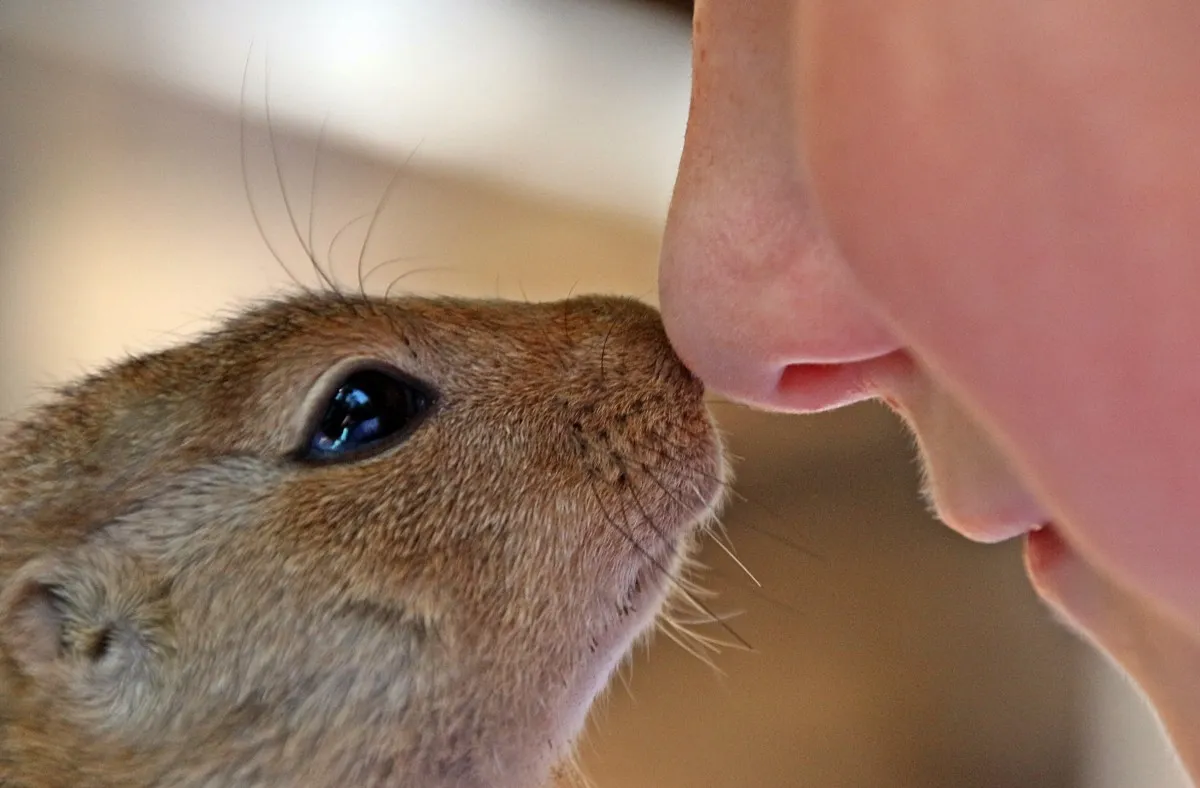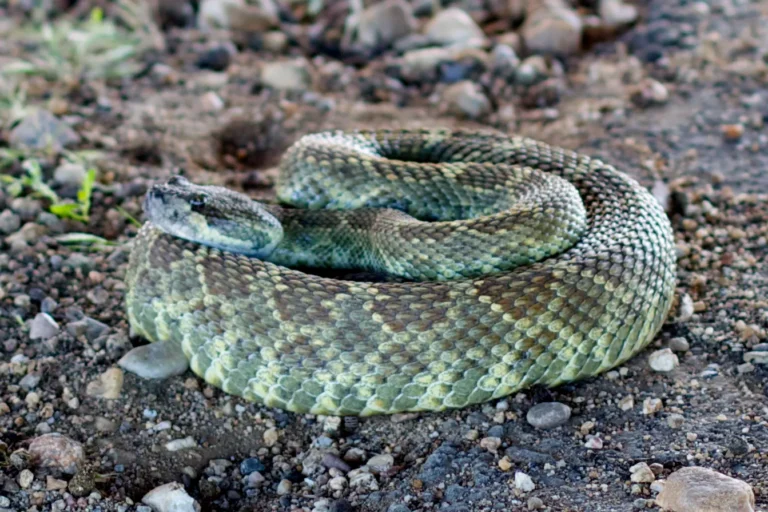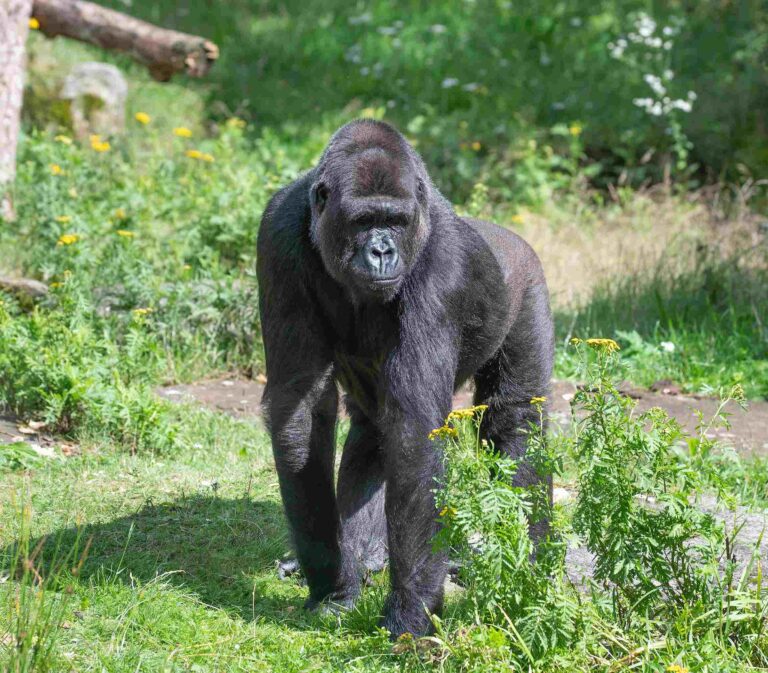Groundhog Vs Prairie Dog Size, Weight, Overall Comparison
Comparing groundhogs to prairie dogs reveals distinctions in size, body shape, and social behaviors. Despite both being members of the rodent family, Sciuridae, these species differ significantly in physical characteristics and lifestyle preferences.
I. Size Disparity:
– Prairie dogs are notably smaller than groundhogs, sometimes by as much as 2-3 times. Groundhogs, being the second-largest species of marmots, surpass prairie dogs in both length and weight. Groundhogs are typically around 26 inches long and weigh up to nine pounds, while prairie dogs trail behind at 16 inches in length.
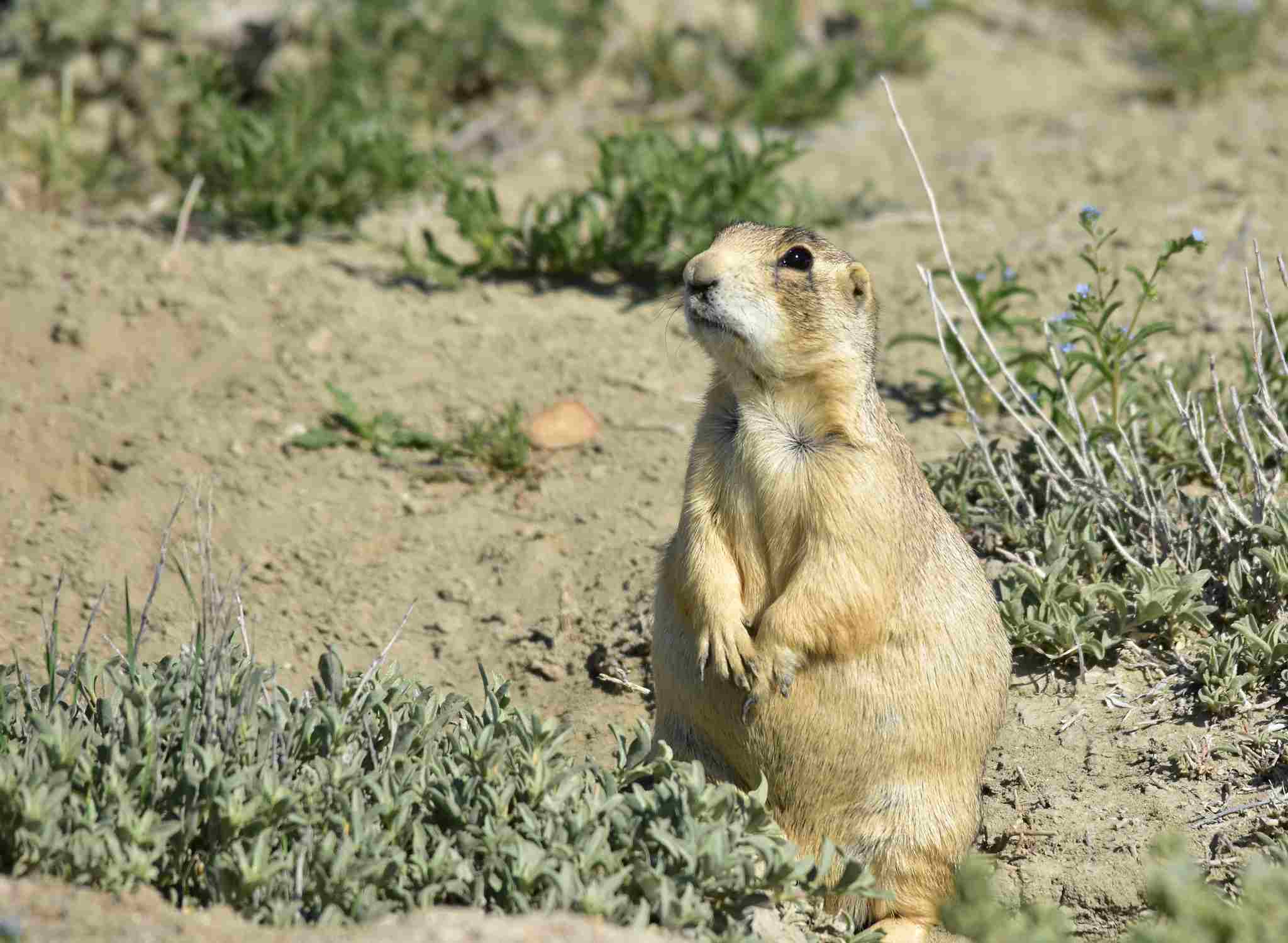
II. Body Shape:
– Groundhogs exhibit a stout and chunky body with short legs, emphasizing their terrestrial lifestyle. In contrast, prairie dogs possess a more slender and elongated body with longer legs, adapted to their burrowing habits and social colonies.
III. Social Behaviors:
– Prairie dogs are known for their social nature, living in large colonies called towns. They exhibit communal behaviors, while groundhogs are more independent and less likely to form large social groups. The difference in social structures reflects their diverse adaptations to their respective environments.
IV. Burrowing Habits:
– Both groundhogs and prairie dogs are burrowing rodents, yet their burrowing habits vary. Groundhogs tend to be more independent in their burrowing activities, creating solitary burrows. In contrast, prairie dogs are social burrowers, constructing elaborate tunnel systems within their colonies.
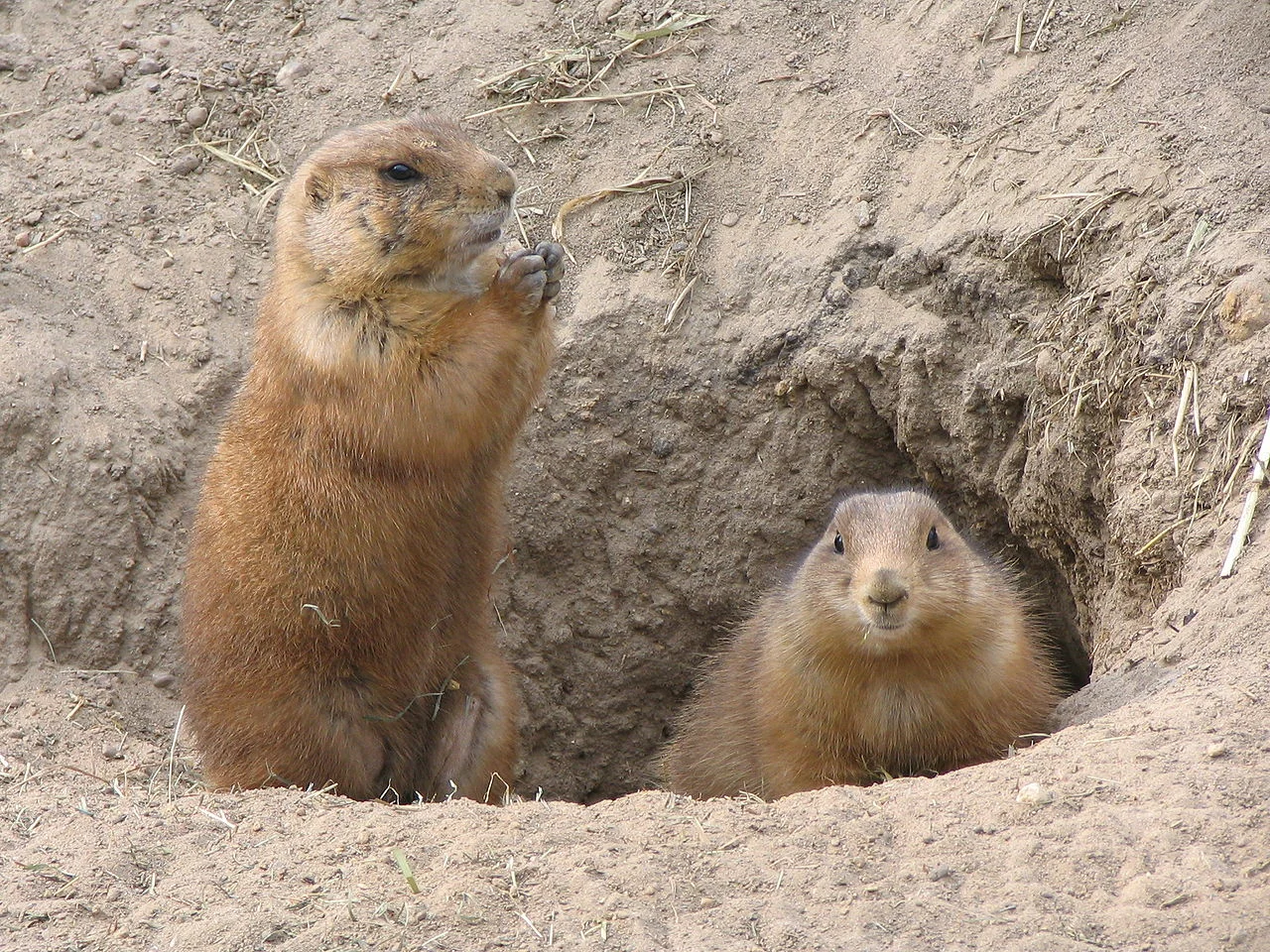
V. Colonization Preferences:
– Groundhogs, as more solitary creatures, prefer independent living arrangements. Prairie dogs, on the other hand, thrive in colonies, showcasing a preference for communal living. This divergence in lifestyle choices contributes to their distinct behaviors and adaptations.
*Details of Comparison
| Criteria | Groundhog | Prairie Dog |
| Appearance | Stout, brown fur |
Slender, upright posture, variable fur colors
|
| Size | Larger (16-26 inches) |
Smaller (12-16 inches)
|
| Weight | Heavier (4-9 pounds) |
Lighter (1-3 pounds)
|
| Bite Force (PSI) | Strong (700 PSI) |
Generally lower compared to groundhogs
|
| Physical Offensive Advantages | Strong claws for digging |
Quick and agile movements
|
| Physical Defensive Advantages | Retreats into burrows, strong hind legs |
Vigilant sentinel behavior, communal alert systems
|
| Speed | 5-10 mph |
Faster (15-20 mph)
|
| Agility | Moderate agility | High agility |
| Senses | Excellent smell, hearing, good eyesight |
Reliant on heightened senses
|
| Overall Physical Capacity | Well-adapted for burrowing |
Agile and quick, adapted for grassland survival
|
| Habitat Preference(s) and Geographic Region | Wooded areas, fields, North America |
Open grasslands, prairies, North America
|
| Tracks | Distinctive tracks leading to burrow entrances |
Tracks show front and hind feet prints
|
| Lifespan | 3-6 years in the wild | Similar lifespans |
| Mode of Feeding | Herbivores, grazing on vegetation |
Herbivores, grazing on grasses and forbs
|
| Intelligence | Moderate intelligence |
Higher social intelligence
|
| Social Behavior | Generally solitary |
Highly social, living in colonies
|
| Mode of Reproduction | Seasonal breeders, varying litter sizes |
Seasonal breeders, varying litter sizes
|
| Parental Behavior | Female cares for young in burrow |
Cooperative care within the colony
|
| Proximity to Human-Inhabited Areas | Can be found in suburban areas |
Encroachment into agricultural and suburban areas
|
| Behavior Toward Humans | Typically avoids direct contact |
Varied responses, depending on disturbance level
|
| Danger Posed to Humans | Generally not dangerous |
Typically not dangerous, but may carry diseases
|
| Associated Precautions | Fencing to deter burrows |
Disease awareness, precautions in shared areas
|
| Conservation Status | Least Concern |
Varies among species, some of conservation concern
|
Key Points
Similarities:
-
- Both are herbivores.
- Similar lifespan and adaptability to human-influenced environments.
Differences:
-
- Groundhogs are larger, more solitary, and exhibit moderate intelligence.
- Prairie dogs are highly social, intelligent, and agile, adapted to grassland survival.
Ecological Implications:
-
- Their characteristics contribute to distinct roles in their ecosystems, influencing vegetation control, population dynamics, and social structures.
1. Taxonomy:
Groundhog:
Kingdom: Animalia
Phylum: Chordata
Class: Mammalia
Order: Rodentia
Family: Sciuridae
Genus: Marmota
Species: Marmota monax
Prairie Dog:
Kingdom: Animalia
Phylum: Chordata
Class: Mammalia
Order: Rodentia
Family: Sciuridae
Genus: Cynomys
Species: Various species within the Cynomys genus
2. Appearance:
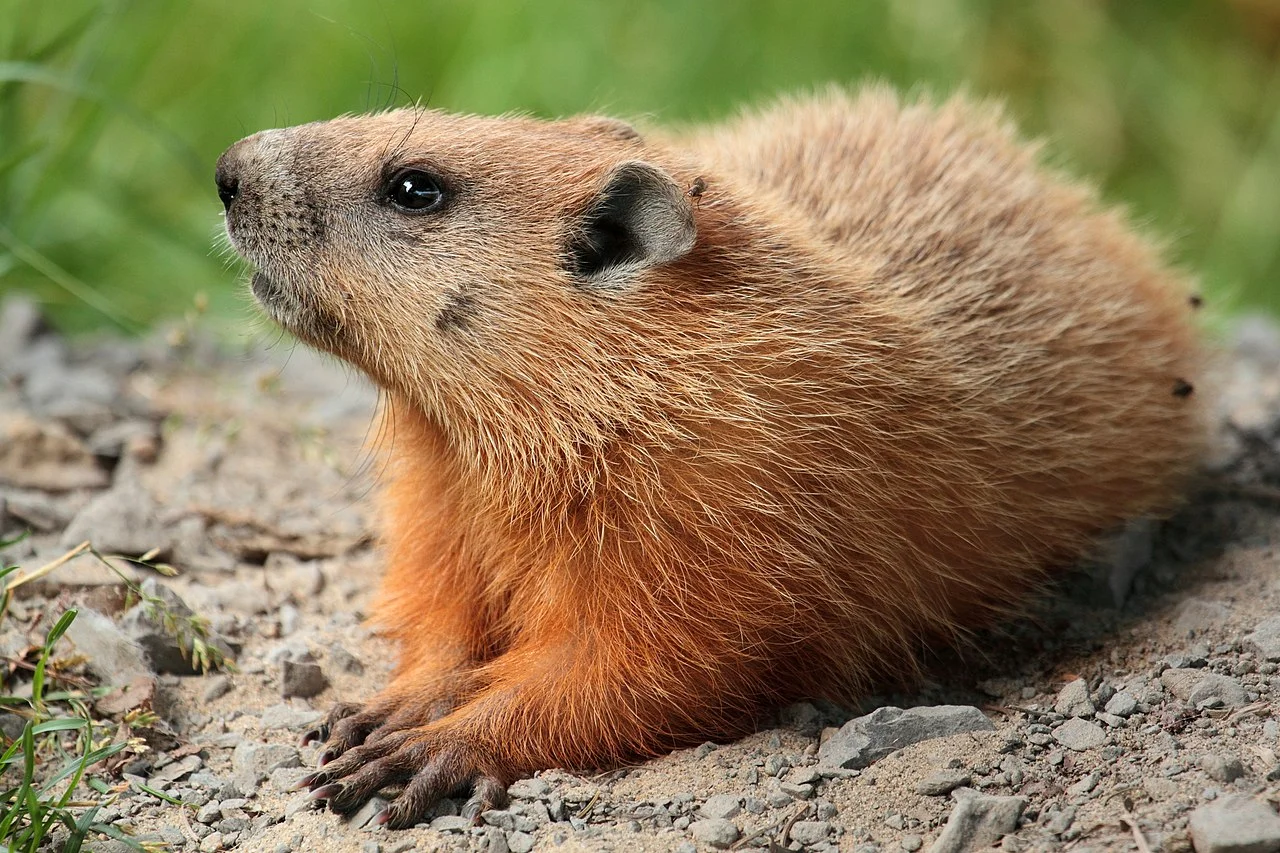
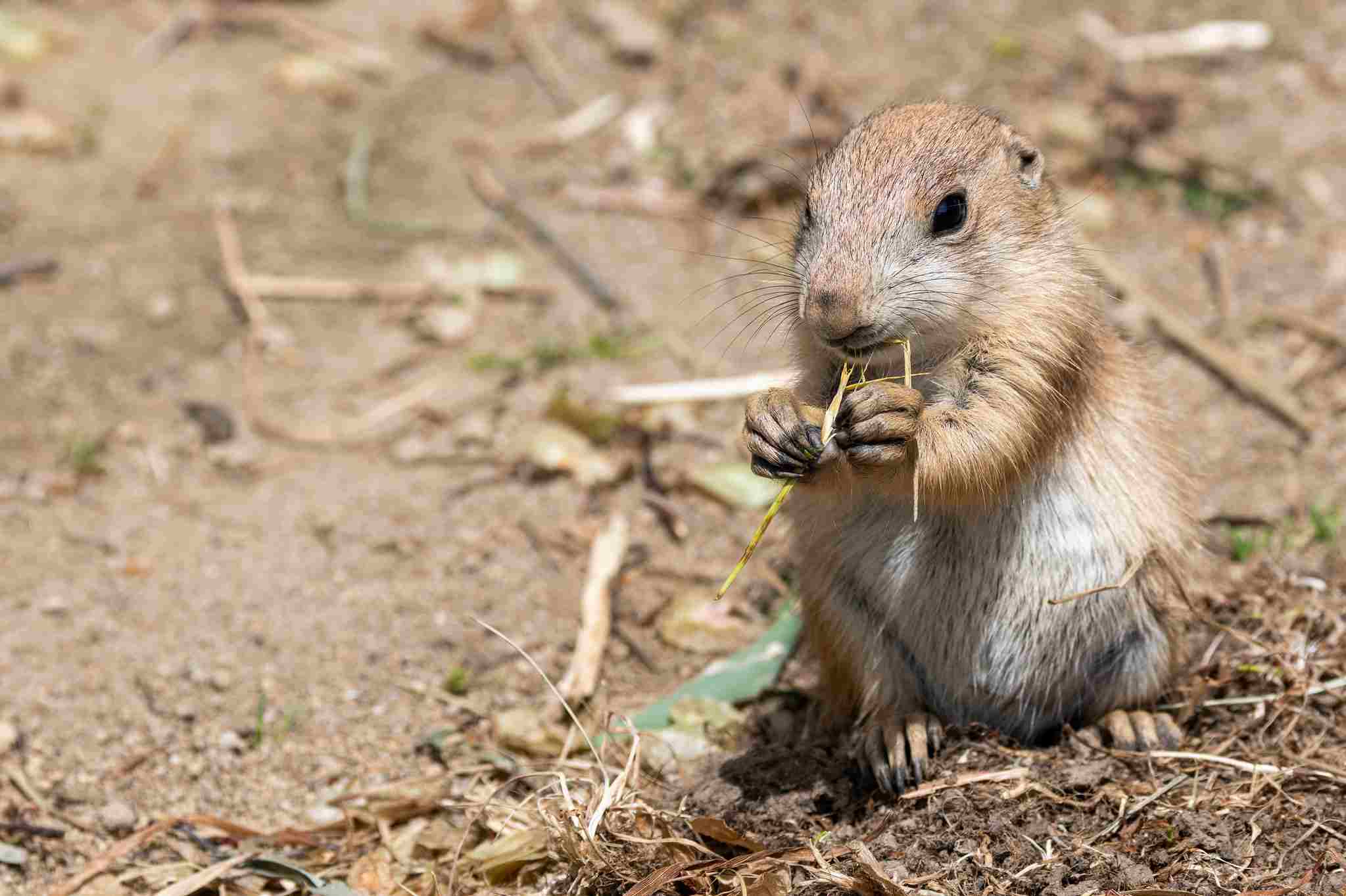
Groundhog:
Stout, medium-sized rodents with short legs.
Brown fur, blending with the soil in their burrow surroundings.
Prairie Dog:
Slender build with a distinctive upright sitting posture.
Varied fur colors (tan, brown, white), facilitating camouflage in grasslands.
Comparison:
Groundhogs have a more robust build, while prairie dogs are slender and agile.
Prairie dogs’ upright posture aids in surveillance of their open habitat.
Ecological Implications:
Groundhogs’ earth-toned fur provides camouflage in wooded areas.
Prairie dogs’ fur color variations assist in adapting to the diverse grassland environments.
3. Size:
Groundhog:
Length: 16-26 inches (40-66 cm), including tail.
Prairie Dog:
Length: 12-16 inches (30-40 cm), excluding tail.
Comparison:
Groundhogs are generally larger in size compared to prairie dogs.
Ecological Implications:
Larger size in groundhogs may provide advantages in burrow construction and thermal regulation.
4. Weight:
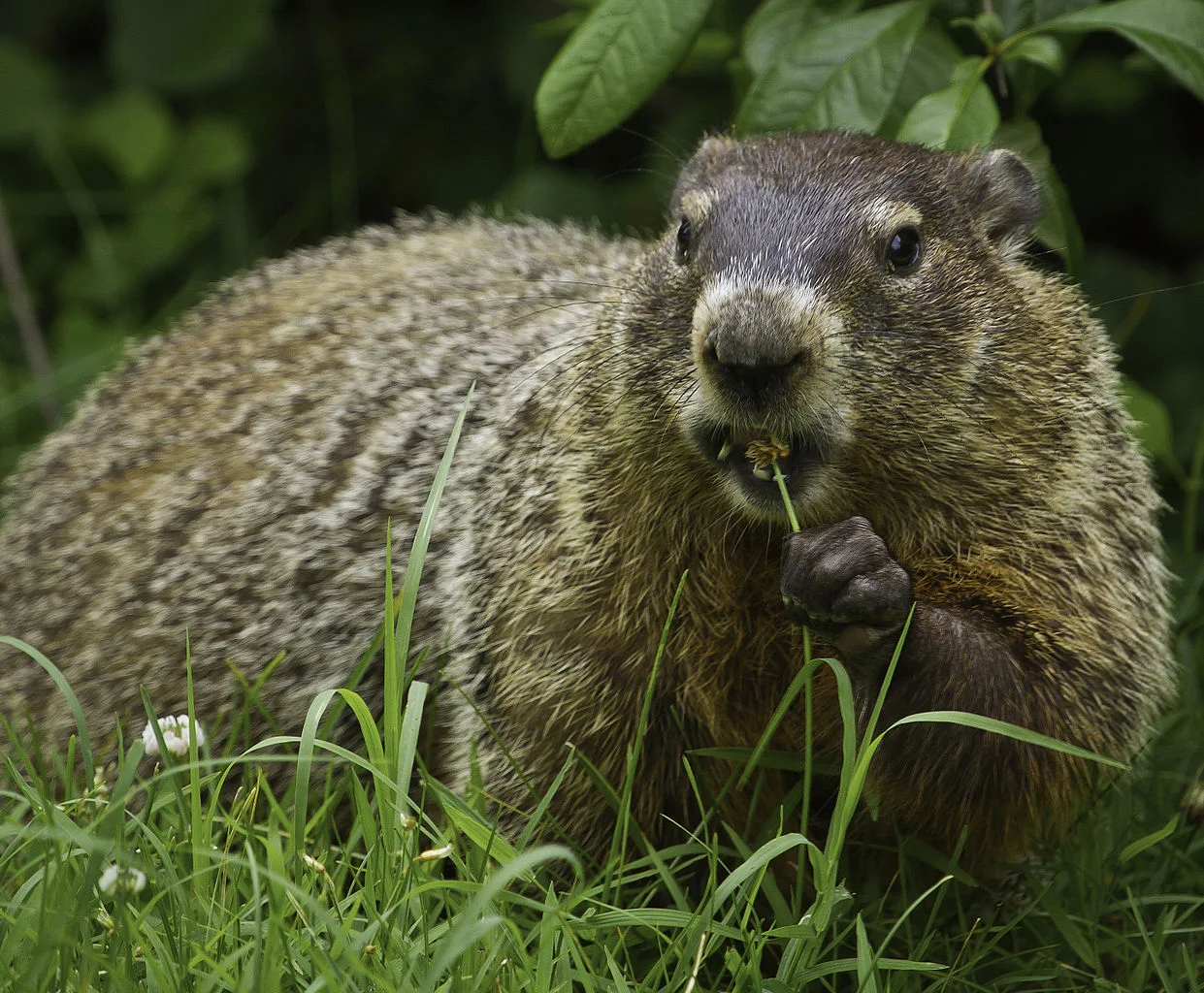
Groundhog:
Weight: 4-9 pounds (1.8-4 kg).
Prairie Dog:
Weight: 1-3 pounds (0.5-1.4 kg).
Comparison:
Groundhogs are heavier than prairie dogs on average.
Ecological Implications:
Weight differences influence foraging behavior and potential impact on vegetation in their respective habitats.
5. Bite Force (PSI – Pounds per Square Inch):
Groundhog:
Estimated bite force: Around 700 PSI.
Prairie Dog:
Estimated bite force: Varies among species, generally lower than groundhogs.
Comparison:
Groundhogs typically have a stronger bite force compared to prairie dogs.
Ecological Implications:
Bite force may play a role in foraging efficiency and defense mechanisms within their ecosystems.
6. Physical Offensive Advantages:
Groundhog:
Strong claws for digging burrows and obtaining food.
Prairie Dog:
Quick and agile movements, aiding in evasion and territorial defense.
Comparison:
Groundhogs rely on powerful digging abilities.
Prairie dogs use agility as a primary defensive measure.
Ecological Implications:
Groundhogs’ digging behavior contributes to soil aeration and modification.
Prairie dogs’ agility helps maintain territory boundaries in the grasslands.
7. Physical Defensive Advantages:
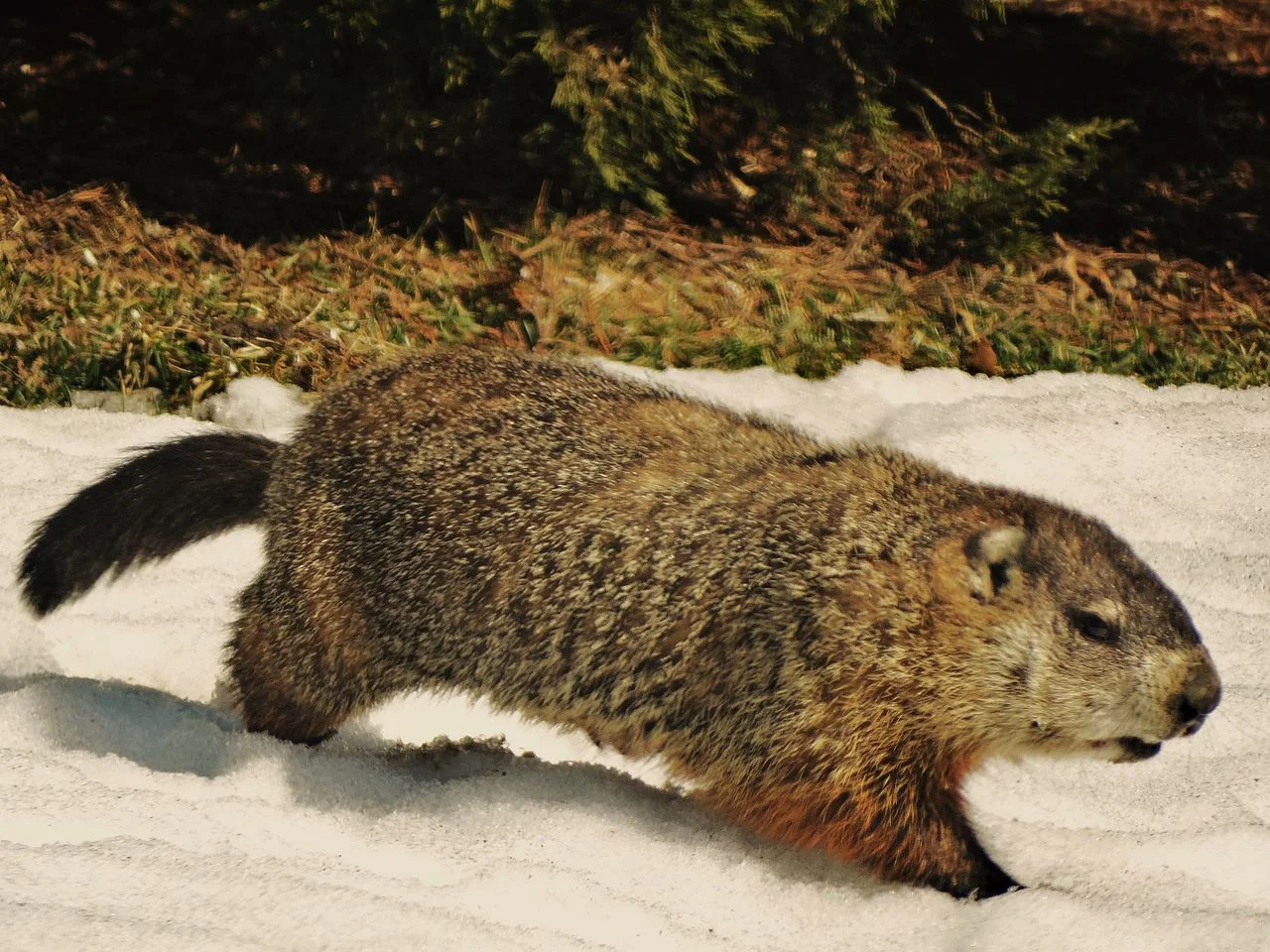
Groundhog:
Retreat into burrows; strong hind legs for rapid escape.
Prairie Dog:
Vigilant sentinel behavior, emitting warning calls for group defense.
Comparison:
Groundhogs retreat underground for protection.
Prairie dogs rely on communal alert systems to detect and warn of potential threats.
Ecological Implications:
Groundhogs’ burrows provide refuge for various wildlife.
Prairie dogs’ communal defense benefits the entire group’s survival.
8. Speed (Km/hour or Mile/hour):
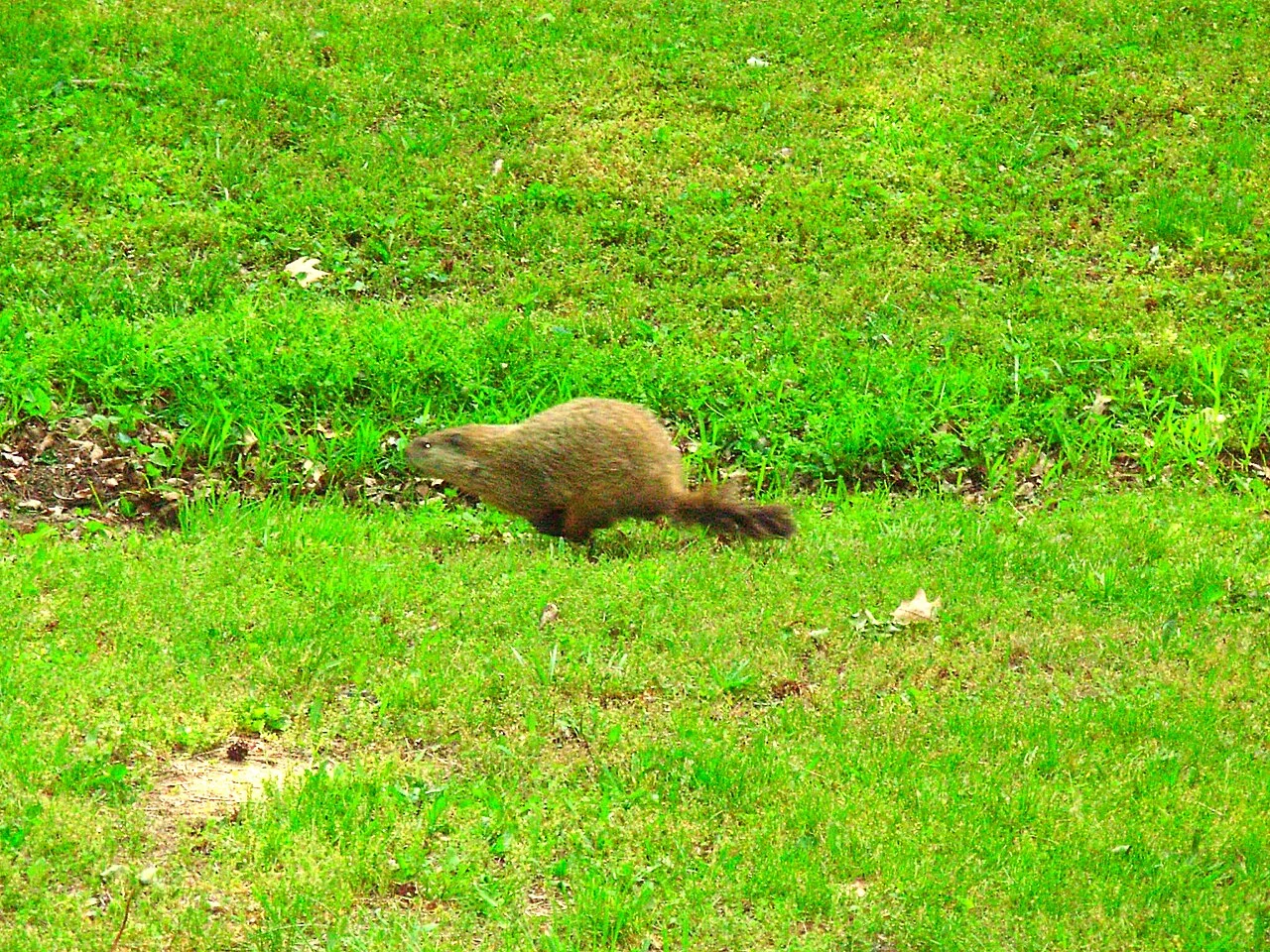
Groundhog:
Running speed: 5-10 mph (8-16 km/h).
Prairie Dog:
Running speed: 15-20 mph (24-32 km/h).
Comparison:
Prairie dogs are generally faster runners compared to groundhogs.
Ecological Implications:
Speed influences escape success from predators in their respective habitats.
9. Agility:
Groundhog:
Moderate agility; well-adapted for burrow excavation.
Prairie Dog:
High agility; rapid movements aid in evading predators.
Comparison:
Prairie dogs exhibit greater agility, crucial in open grassland habitats.
Groundhogs display agility suitable for navigating wooded or burrow-rich environments.
Ecological Implications:
Agility contributes to survival strategies, such as evasion and territorial defense.
10. Senses:
Groundhog:
Excellent sense of smell and hearing; good eyesight.
Prairie Dog:
Well-developed senses of smell and hearing; keen eyesight.
Comparison:
Both groundhogs and prairie dogs rely on heightened senses for detection of predators.
Ecological Implications:
Enhanced senses contribute to early detection of potential threats in their respective environments.
11. Overall Physical Capacity:
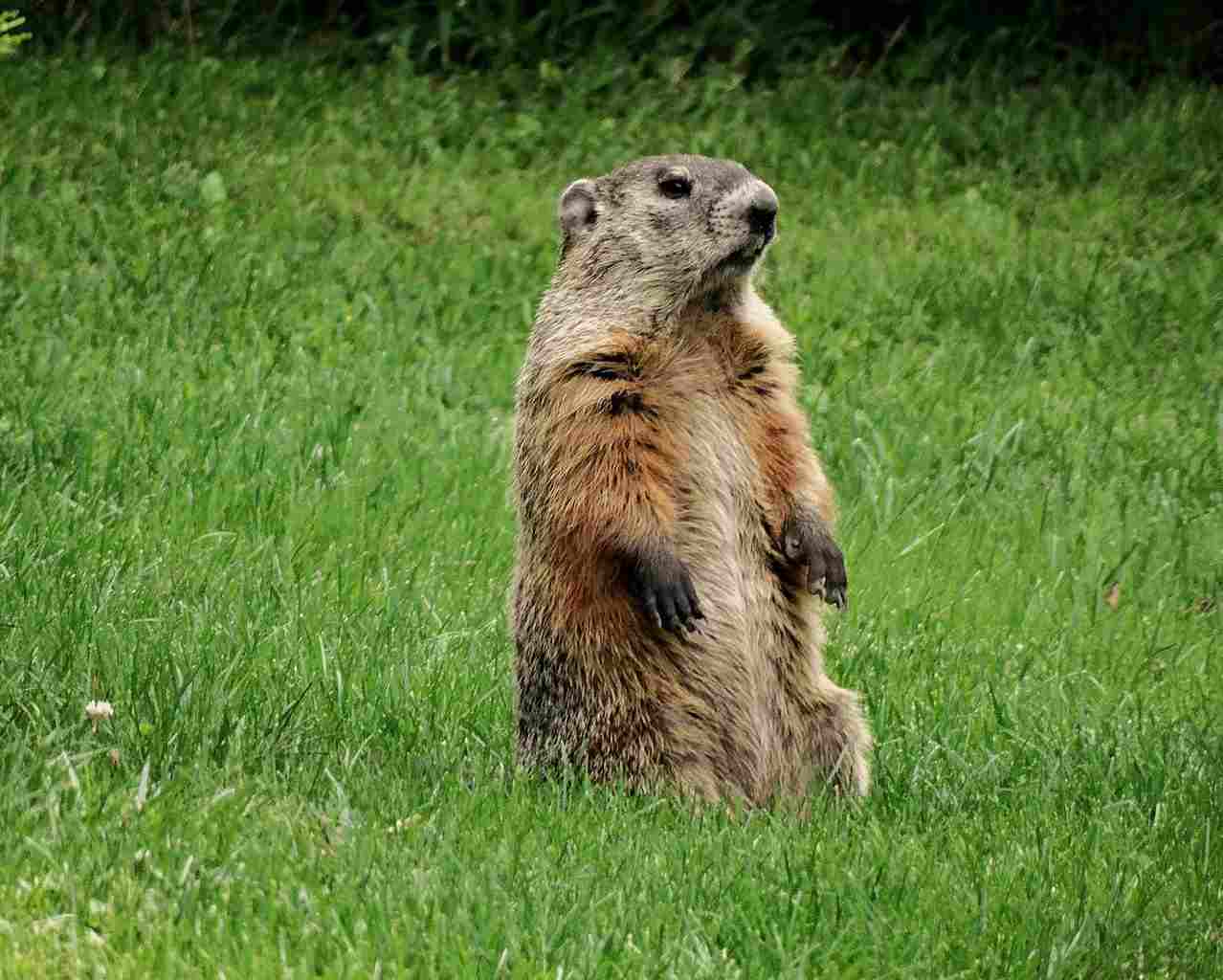
Groundhog:
Well-adapted for burrowing; strong limbs for digging.
Prairie Dog:
Agile and quick; adapted for survival in open grasslands.
Comparison:
Groundhogs excel in burrow-related activities.
Prairie dogs’ physical features favor survival in expansive grassland ecosystems.
Ecological Implications:
Adaptations support their roles in ecosystem structure and function.
12. Habitat Preference(s) and Geographic Region:
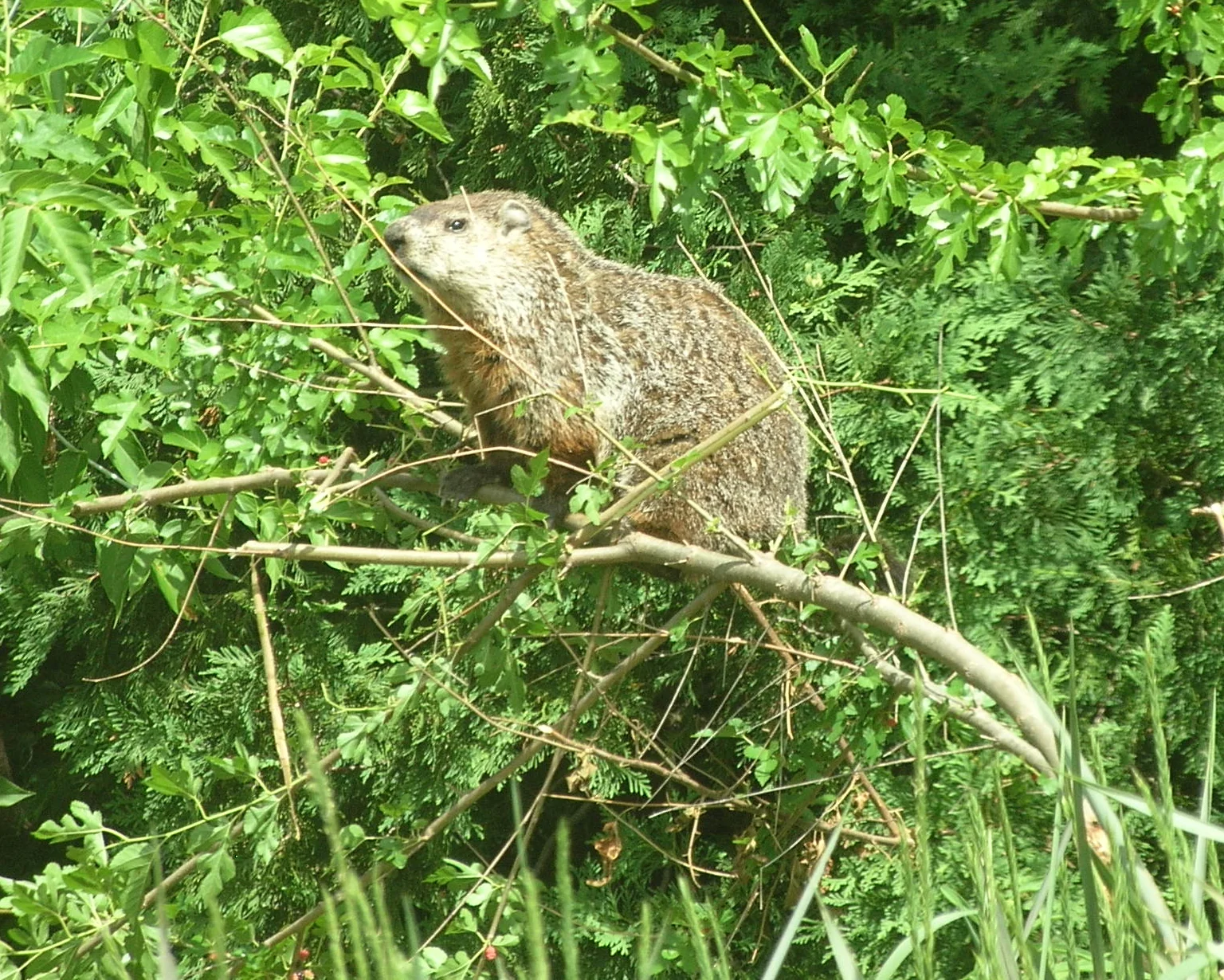
Groundhog:
Wooded areas, fields, and gardens; widely distributed in North America.
Prairie Dog:
Open grasslands, meadows, and prairies; primarily found in North America.
Comparison:
Groundhogs adapt to various environments, including wooded habitats.
Prairie dogs are specialized for open, grassy landscapes.
Ecological Implications:
Habitat preferences influence their impact on local ecosystems.
13. Tracks:
Groundhog:
Distinctive tracks with claw marks, often leading to burrow entrances.
Prairie Dog:
Tracks show a combination of prints from the front and hind feet.
Comparison:
Groundhog tracks are often associated with burrows.
Prairie dog tracks may reflect their frequent movement across open terrain.
Ecological Implications:
Tracking behavior provides insights into their territory use and foraging patterns.
14. Lifespan:
Groundhog:
Typically 3-6 years in the wild.
Prairie Dog:
About 3-5 years in the wild.
Comparison:
Groundhogs and prairie dogs have similar lifespans in their natural habitats.
Ecological Implications:
Lifespan influences population dynamics and ecological interactions within their ecosystems.
15. Mode of Feeding:
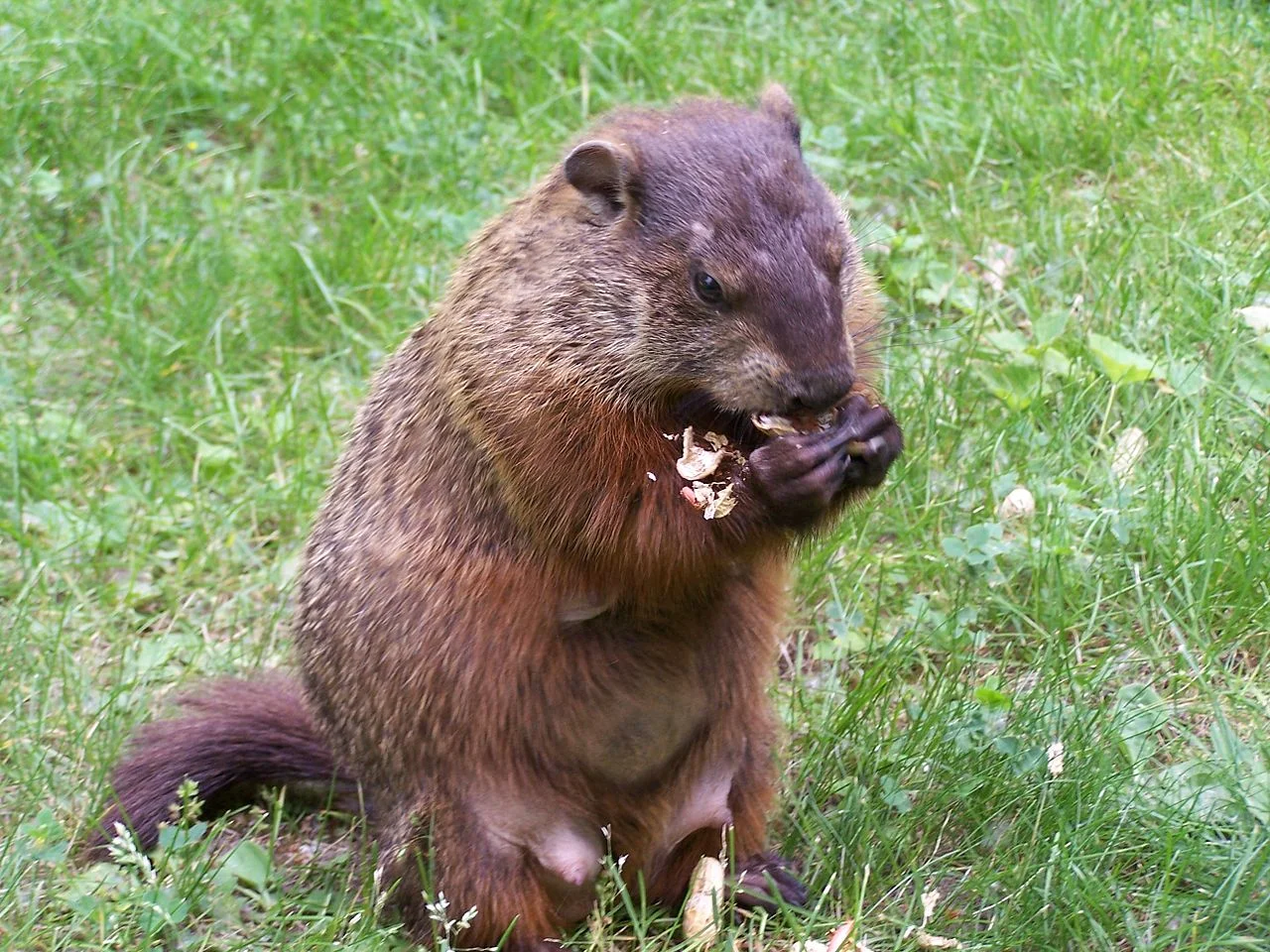
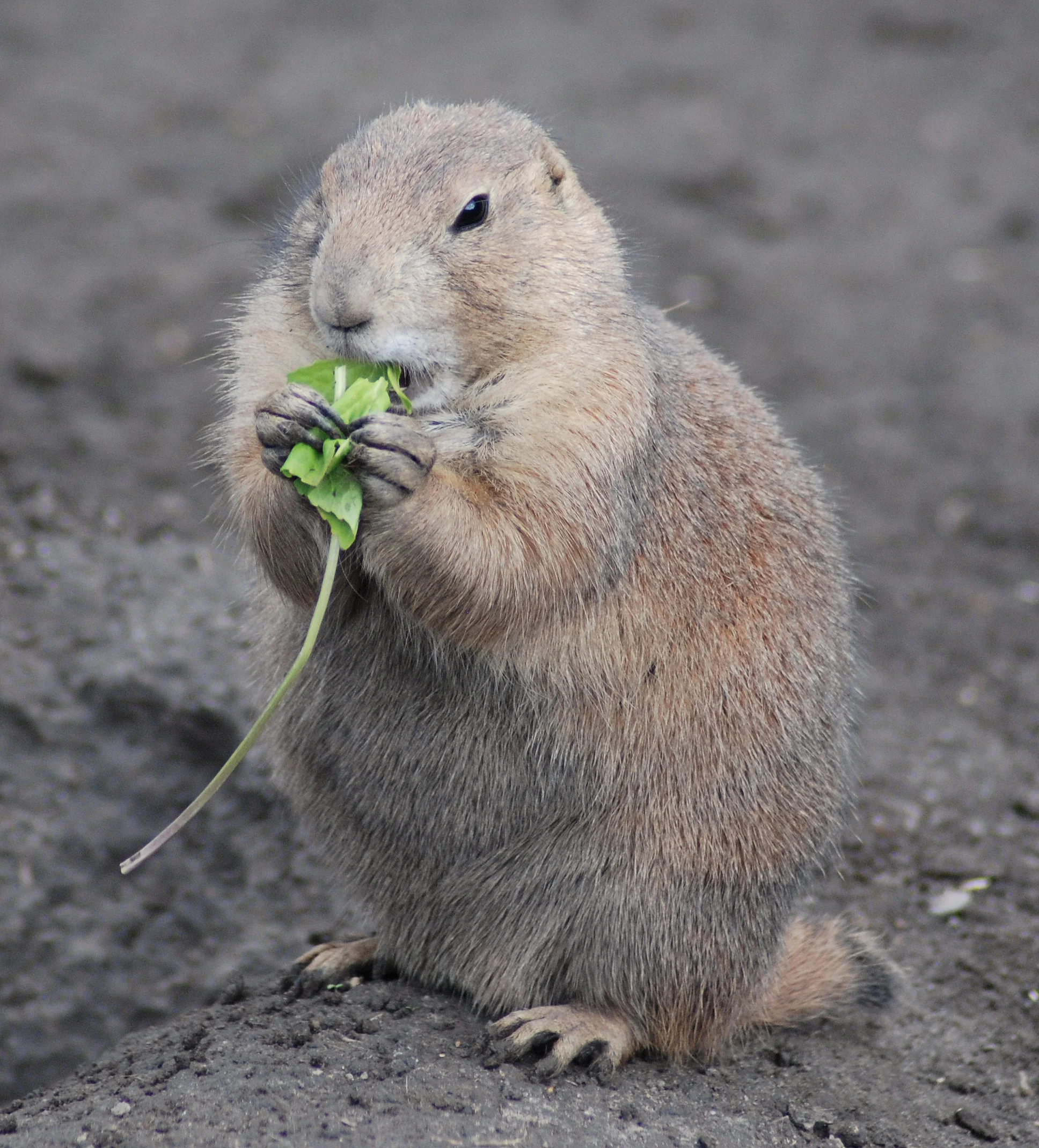
Groundhog:
Herbivores; primarily feed on vegetation, including grasses and crops.
Prairie Dog:
Herbivores; graze on grasses and forbs.
Comparison:
Both groundhogs and prairie dogs share a herbivorous diet.
Ecological Implications:
Feeding habits contribute to vegetation control and nutrient cycling in their habitats.
16. Intelligence:
Groundhog:
Moderate intelligence; known for problem-solving related to burrow construction.
Prairie Dog:
Social and intelligent; exhibit complex communication and recognition.
Comparison:
Prairie dogs demonstrate higher social intelligence compared to groundhogs.
Ecological Implications:
Intelligence affects their ability to navigate and respond to environmental challenges.
17. Social Behavior:
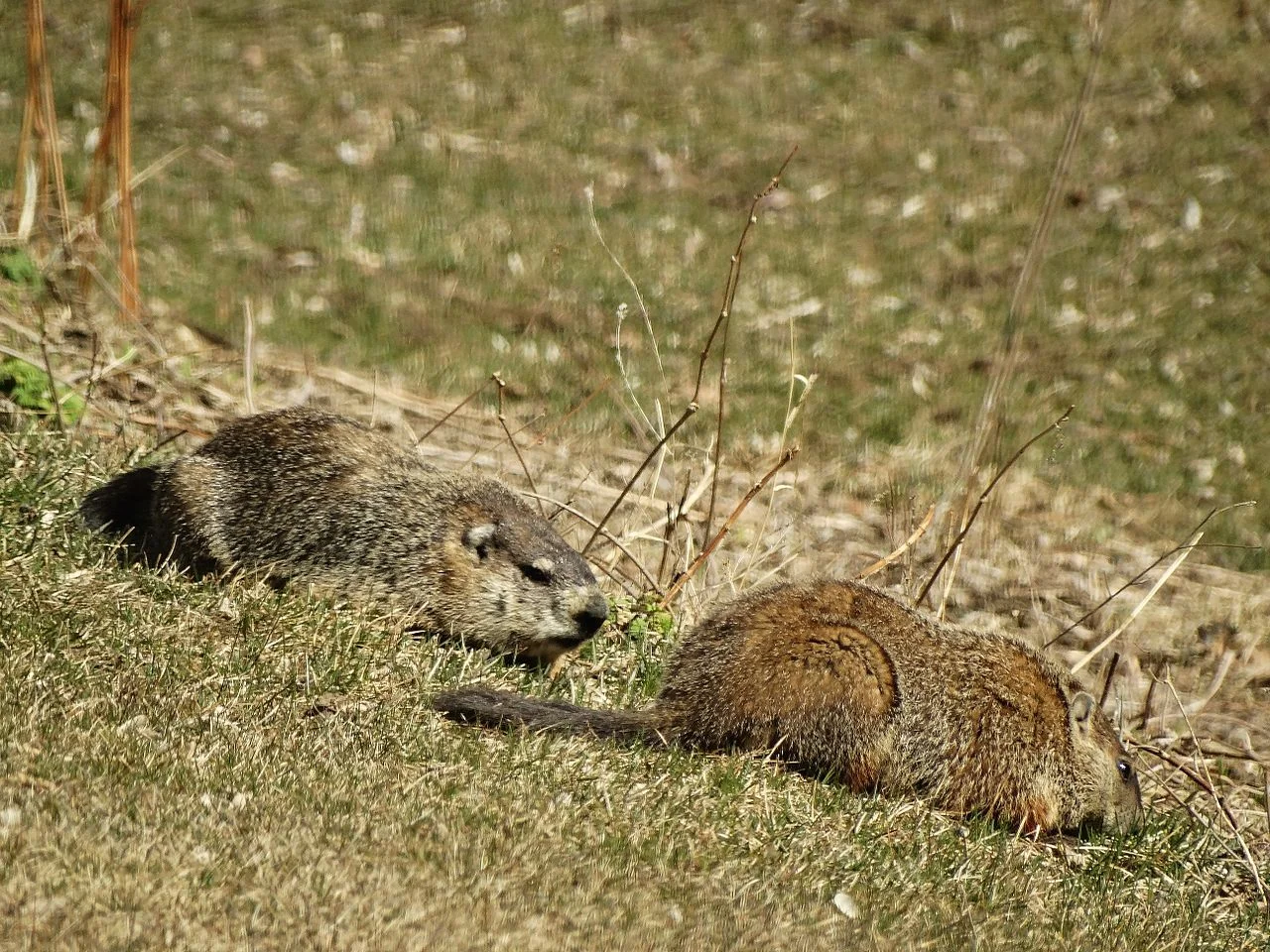
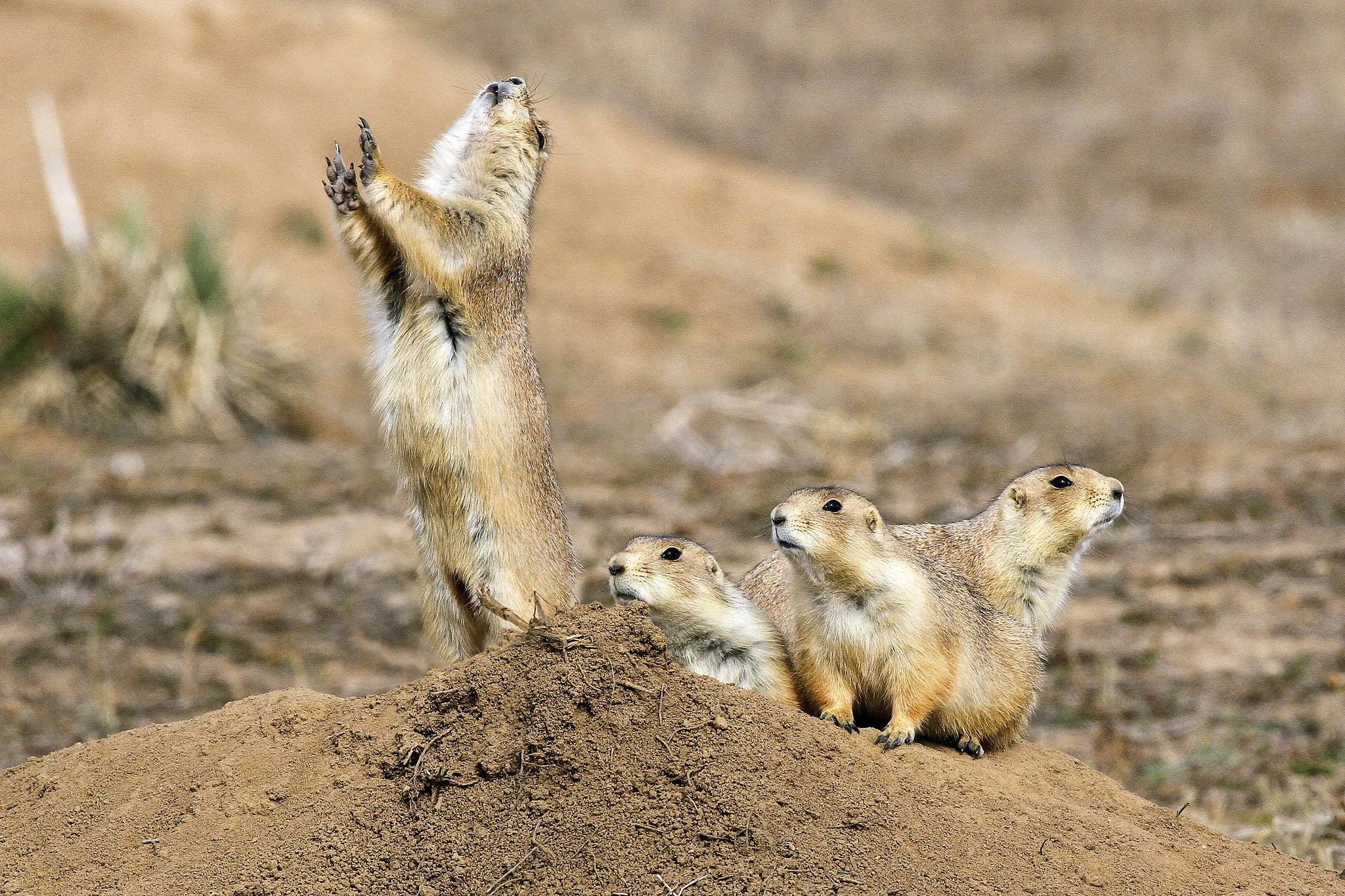
Groundhog:
Generally solitary; may tolerate limited interaction during mating season.
Prairie Dog:
Highly social; live in colonies with complex social structures.
Comparison:
Prairie dogs exhibit extensive social interactions, including cooperative defense.
Ecological Implications:
Social structures influence community dynamics and predator deterrence within their ecosystems.
18. Mode of Reproduction:
Groundhog:
Seasonal breeders; give birth to 2-6 offspring per litter.
Prairie Dog:
Seasonal breeders; litter size varies, usually 3-8 pups.
Comparison:
Both groundhogs and prairie dogs have seasonal reproductive patterns.
Ecological Implications:
Reproductive strategies impact population dynamics and species interactions in their ecosystems.
19. Parental Behavior:
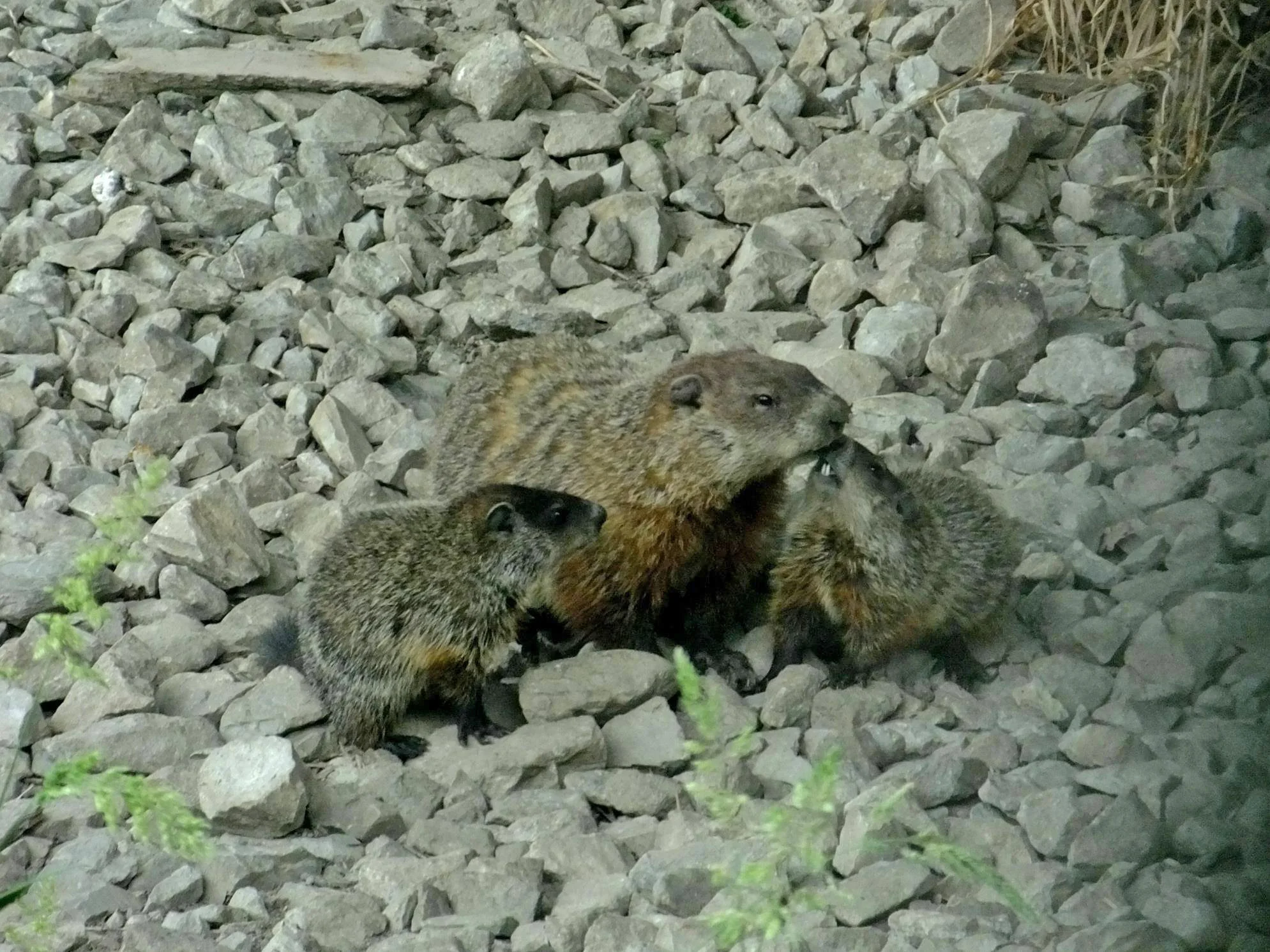
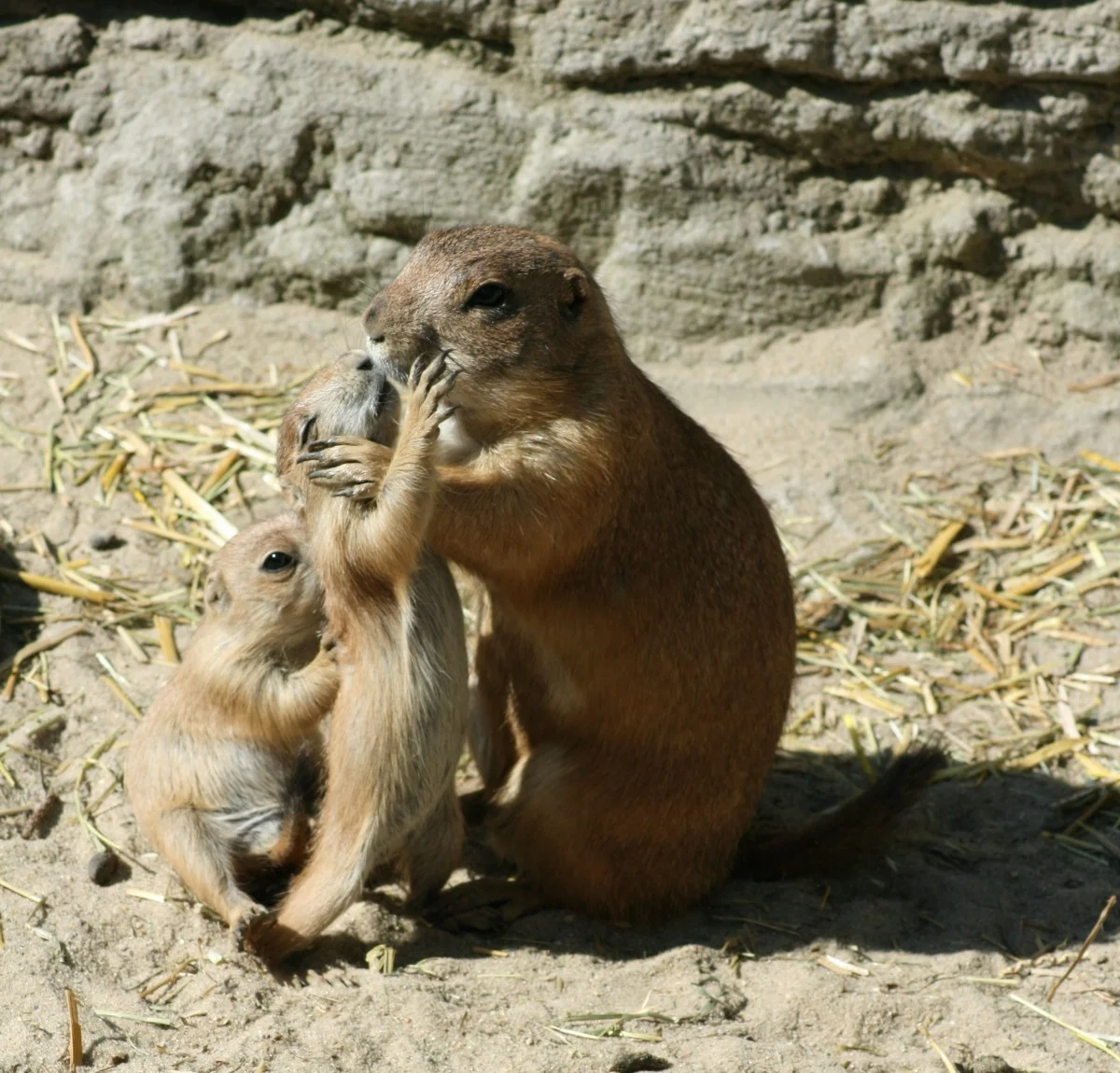
Groundhog:
Female cares for and nurses the young in the burrow.
Prairie Dog:
Cooperative care within the colony; multiple individuals contribute to pup care.
Comparison:
Prairie dogs exhibit communal parenting, involving multiple adults.
Ecological Implications:
Cooperative care contributes to the survival and well-being of the young within prairie dog colonies.
20. Proximity to Human-Inhabited Areas:
Groundhog:
Can be found in suburban and rural areas, often near human dwellings.
Prairie Dog:
Encroachment into agricultural and suburban areas can bring them closer to human communities.
Comparison:
Both species may adapt to habitats influenced by human activities.
Ecological Implications:
Human proximity can impact the behavior and survival of these animals.
21. Behavior Toward Humans:
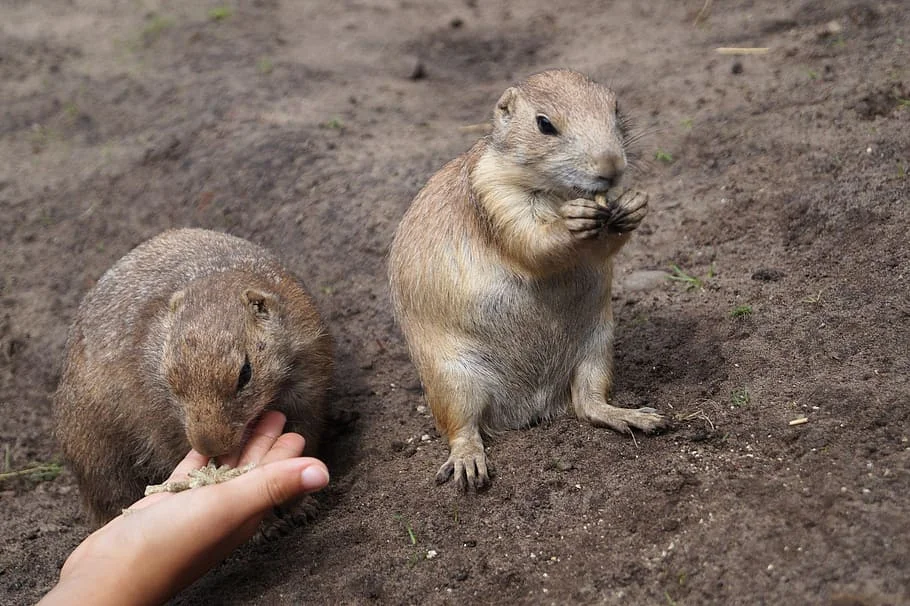
Groundhog:
Typically avoid direct contact; may become accustomed to human presence.
Prairie Dog:
Varied responses; may display curiosity or retreat, depending on the level of human disturbance.
Comparison:
Both groundhogs and prairie dogs may exhibit varying degrees of tolerance or avoidance towards humans.
Ecological Implications:
Human interactions can influence their behavior and potentially affect local ecosystems.
22. Danger Posed to Humans:
Groundhog:
Generally not dangerous; may cause minor damage to gardens.
Prairie Dog:
Typically not dangerous to humans; may carry diseases like plague.
Comparison:
Neither groundhogs nor prairie dogs pose significant physical threats to humans.
Ecological Implications:
Potential disease transmission from prairie dogs highlights the importance of understanding wildlife health in shared environments.
23. Associated Precautions:
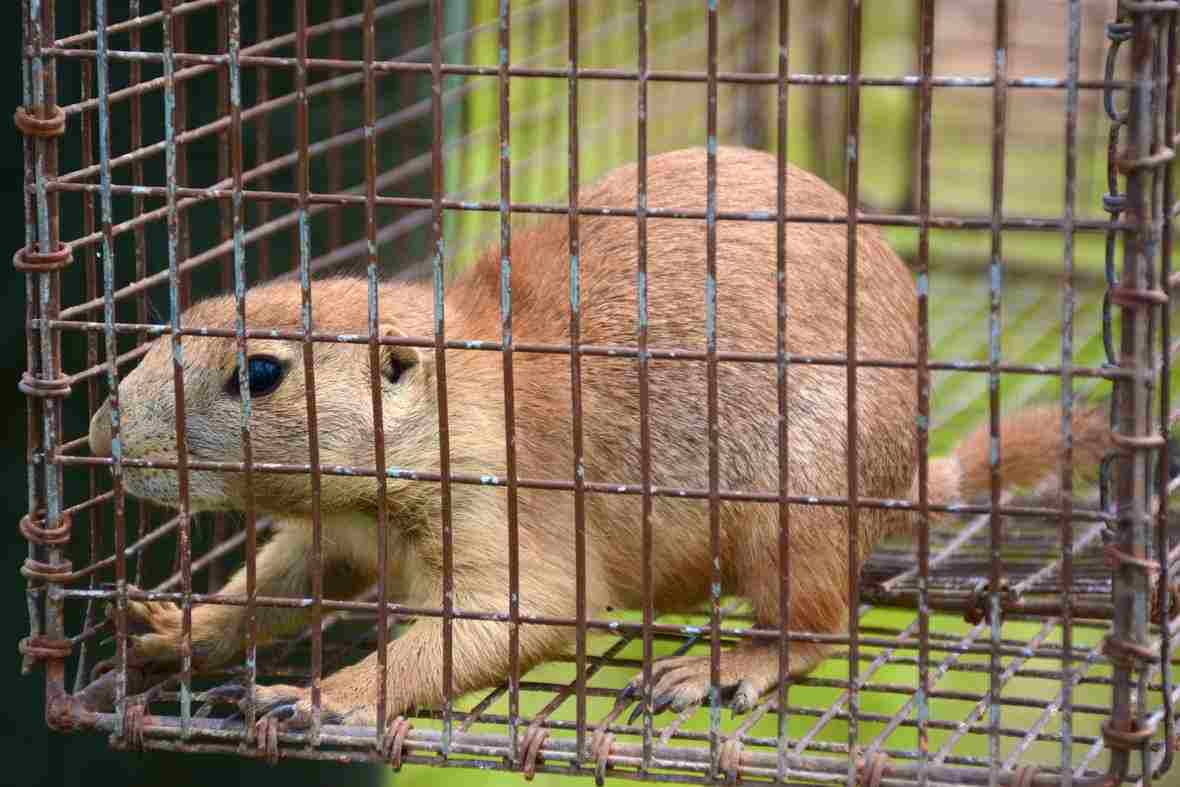
Groundhog:
Implementing fencing or barriers to deter burrow construction near gardens.
Prairie Dog:
Awareness of disease risks; avoiding close contact and taking precautions when present in shared areas.
Comparison:
Precautions involve mitigating specific behaviors, such as burrowing or disease transmission.
Ecological Implications:
Human-wildlife coexistence strategies aim to minimize negative impacts on both parties.
24. Conservation Status:
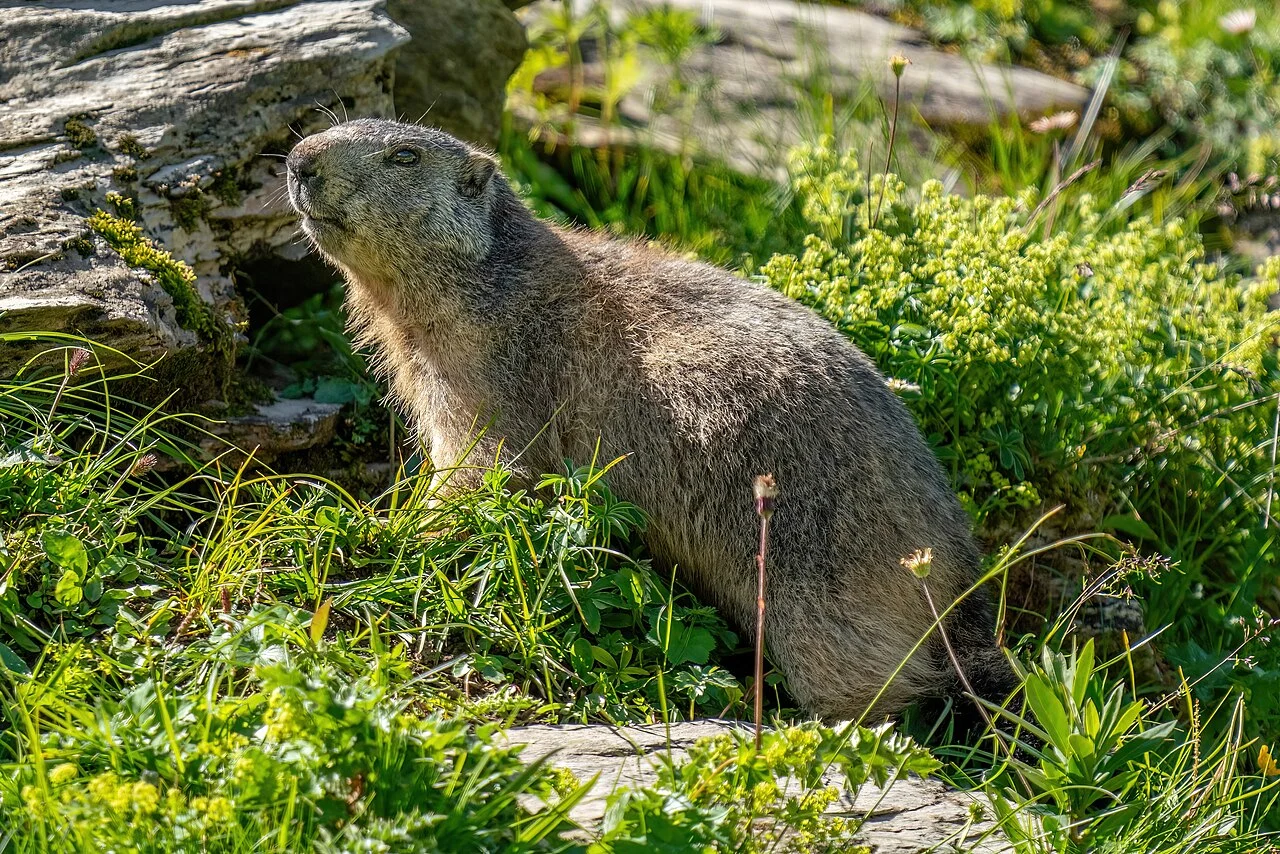
Groundhog:
Least Concern; not considered globally threatened.
Prairie Dog:
Some species are of conservation concern due to habitat loss and disease; others are Least Concern.
Comparison:
Conservation statuses vary among prairie dog species.
Ecological Implications:
Conservation efforts may be needed to address threats to specific prairie dog populations and maintain ecosystem balance.
*Summary of Comparison
Appearance:
Groundhog: Stout with brown fur, suited for wooded areas.
Prairie Dog: Slender, upright posture, with variable fur colors for grassland camouflage.
Size:
Groundhog: Larger, 16-26 inches in length.
Prairie Dog: Smaller, 12-16 inches in length.
Weight:
Groundhog: Heavier, 4-9 pounds.
Prairie Dog: Lighter, 1-3 pounds.
Bite Force (PSI):
Groundhog: Stronger bite force, around 700 PSI.
Prairie Dog: Generally lower bite force compared to groundhogs.
Physical Offensive Advantages:
Groundhog: Strong claws for digging.
Prairie Dog: Quick and agile movements.
Physical Defensive Advantages:
Groundhog: Retreats into burrows; strong hind legs.
Prairie Dog: Vigilant sentinel behavior; communal alert systems.
Speed:
Groundhog: 5-10 mph.
Prairie Dog: Faster, 15-20 mph.
Agility:
Groundhog: Moderate agility for burrow-related activities.
Prairie Dog: High agility for rapid movements in open grasslands.
Senses:
Both rely on excellent smell, hearing, and good eyesight for predator detection.
Overall Physical Capacity:
Groundhog: Well-adapted for burrowing.
Prairie Dog: Agile and quick, adapted for grassland survival.
Habitat Preference(s) and Geographic Region:
Groundhog: Wooded areas, fields; North America.
Prairie Dog: Open grasslands, prairies; North America.
Tracks:
Groundhog: Distinctive tracks leading to burrow entrances.
Prairie Dog: Tracks show front and hind feet prints.
Lifespan:
Similar, around 3-6 years in the wild.
Mode of Feeding:
Both herbivores, grazing on vegetation.
Intelligence:
Groundhog: Moderate intelligence.
Prairie Dog: Higher social intelligence.
Social Behavior:
Groundhog: Generally solitary.
Prairie Dog: Highly social, living in colonies.
Mode of Reproduction:
Similar seasonal breeders with varying litter sizes.
Parental Behavior:
Groundhog: Female cares for young in burrow.
Prairie Dog: Cooperative care within the colony.
Proximity to Human-Inhabited Areas:
Both may adapt to suburban areas.
Behavior Toward Humans:
Varied responses, ranging from avoidance to tolerance.
Danger Posed to Humans:
Neither poses significant physical threats.
Associated Precautions:
Groundhog: Fencing to deter burrows.
Prairie Dog: Disease awareness, precautions in shared areas.
Conservation Status:
Groundhog: Least Concern.
Prairie Dog: Varies among species, with some of conservation concern.
Conclusion
I). Similarities:
Both groundhogs and prairie dogs are herbivorous rodents with a significant ecological impact on their respective habitats.
They share similar lifespans, reproductive patterns, and adaptability to human-influenced environments.
II). Differences:
Groundhogs are generally larger, have a solitary lifestyle, and exhibit moderate intelligence.
Prairie dogs are highly social, with complex communication and communal parenting behaviors.
